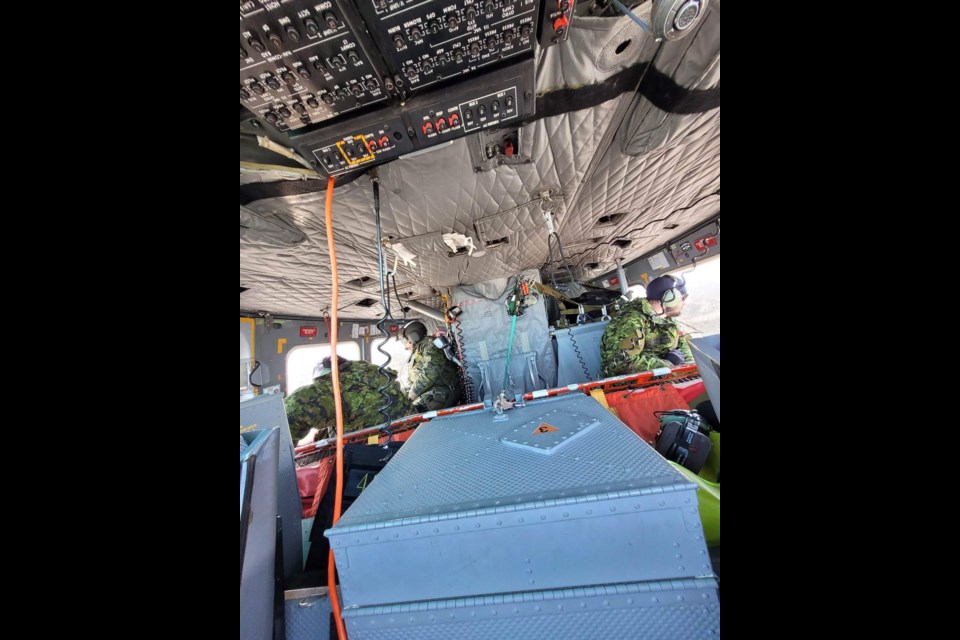THUNDER BAY – A days-long search for a small aircraft that went missing between Nakina and Fort Hope on Tuesday has ended in tragedy, after both occupants of the plane were found deceased on Saturday.
The missing Cessna 208 commercial aircraft, owned by ZAM Air Service, was discovered around 11:30 a.m. on Saturday, as the search entered its fifth day.
The crashed plane was discovered just south of Chaucer Lake, roughly 60 kilometres north of Nakina, about one third of the way along its planned route to Fort Hope, also known as Eabametoong First Nation.
The crash site was spotted visually by volunteers with the Civil Air Search and Rescue Association (CASARA) flying in a Cessna Skymaster.
Members of the RCAF arrived at the scene just before noon in a CH-146 Griffon helicopter, finding the two occupants absent of vital signs, according to a spokesperson for the Joint Rescue Coordination Centre (JRCC) Trenton.
The helicopter was not able to land due to dense foliage in the area, and instead lowered RCAF search and rescue technicians by hoist to the site.
The JRCC did not identify the deceased in a release issued Saturday evening.
Maj. Emmanuelle Gratton, an Air Task Force Commander involved in the search, said in an interview the agency couldn't speculate on whether it was possible the pilots could have survived the crash.
The Transportation Safety Board is expected to launch an investigation into the cause of the incident.
"Unfortunately it’s not the outcome we were looking for," Gratton said. “We hope this can at least provide closure to family and friends, and our thoughts are with them today."
Crews were unable to locate the aircraft through a transmitter, Gratton said. She said the RCAF recommends all aircraft have transmitters, but they are not mandatory on all planes.
JRCC Trenton is operated by the Royal Canadian Air Force and the Canadian Coast Guard and coordinates search and rescue responses over a wide swath of central and northern Canada.
The missing Cessna was reported overdue on Tuesday afternoon after failing to arrive in Fort Hope, located about 150 kilometres northeast of Armstrong.
A Thunder Bay-based air task force was struck on Thursday, with more than half a dozen aircraft and support from groups including the Royal Canadian Air Force, Canadian Coast Guard, the volunteer Civil Air Search and Rescue Association (CASARA), OPP, and Ontario’s Ministry of Natural Resources.
A total of eight aircraft were participating in the search on Saturday.
Gord Tessier of CASARA was serving as aircraft commander on the plane that spotted the crash site Saturday morning. Little of the plane was visible, but spotters saw what appeared to be scorched ground, he said.
CASARA has close to 30 members in Thunder Bay, with about half a dozen participating in the search effort. Others, including Tessier, joined from areas including the Niagara region.
The condition of the crashed aircraft was not immediately apparent to spotters, and Tessier said the tragic outcome came as a blow to the CASARA team.
"We never speculate, because we want the [search and rescue professionals] on the ground looking right away," he said. "It didn’t look very good to us from our perspective, but beyond that, we just hope."
"We’re glad maybe we can bring closure to the family, but at the same time, it’s tough – it’s tough for everybody."
Correction: An earlier version of this story indicated the crashed aircraft was around 100 kilometres north of Nakina. In fact, the location is around 60 kilometres north of Nakina, according to the RCAF. TBnewswatch regrets the error.
